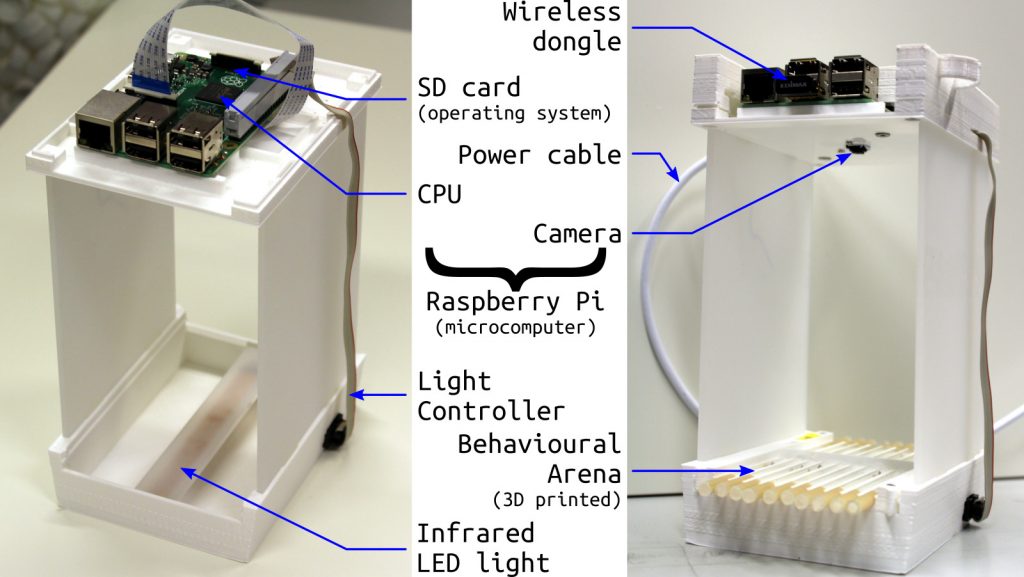The Gilestro Lab at Imperial College London specializes in the study of sleep and how it affects our everyday lives. By focusing on this particular aspect of animals and humans, the research seeks to illuminate features of consciousness, asking if and why sleep is a necessary part of life.
A complicated concept that crosses the bounds of neuroscience and biology, the Gilestro Lab focuses on the behaviour of fruit flies. By exhibiting the same basic needs as most animals, the tiny insects have large similarities with mammals, meaning studies of their brain has significant potential for understanding the human mind, and also for the development of artificial intelligence (AI).
A 3D printed device invented at the lab seeks to boost fruit fly neuroscience research through simple, modifiable, opensource design, and the ability to test multiple insects at once.
A demo of the Gilestro Lab’s 3D printed ethoscope for studying fly behaviour. Clip via Quentin Geissmann on YouTube
Flies enter the arena
Ethoscopes are the subject of the Gilestro Lab’s latest research paper published in PLoS Biology journal, co-authored by Quentin Geissmann, Luis Garcia Rodriguez, Esteban J. Beckwith, Alice S. French, Arian R. Jamasb and Giorgio F. Gilestro.
The devices are composed of a 3D printed gantry, with cameras at the top and interchangeable arenas at the bottom.

So far, the lab has designed eight different arenas each aimed at stimulating certain behaviours in a sample of flies.

Imperial lab lead Dr. Giorgio Gilestro explains, “We can programme the machine to send stimuli to the flies only when they behave in a certain way, for example the robots can be programmed to give flies rewards only if they complete a learned task.”
Sleep deprivation
The most commonly used arena, for example, is a plate containing 20 channels to lodge individual tubes and study sleep deprivation. With a single fly in each, the tubes can be turned to keep flies awake for a determined period of time. Video footage of the experiment can then be studied afterwards, or in real-time, to understand and map fly behaviour.
So far, the device has proved instrumental in the Gilestro lab’s discovery that mating beats sleeping when male and female flies are put together.
Open access design
Ethoscopes are powered by a Raspberry Pi brain and small motors. Algorithms created to operate the devices and track patterns also enable machine-learning in ethoscopes. In the Imperial experiment, the devices were desktop 3D printed in PLA using Ultimaker 2+ 3D printers.
The design of the device has been made available for free online so other researchers can download the models, modify the design if necessary, and 3D print their own. Such an open source philosophy is key to the device’s success Dr. Gilestro adds, “The ethoscope is going to provide neuroscientists with a very new powerful tool to study, for instance, the biology of learning and memory or the function of sleep.”

Understand AI – starting small
Worth noting is that the fruit fly brains are composed of around 135,000 neurons, making them small enough to be digitally recreated in the future. Achieving a complete map of a fruit fly brain would be a tremendous feat for neuroscience, and have great implications for the future of AI. Fish behaviour also holds some indication of how the human brain works, and is the subject of another 3D printing related project at Tandon School of Engineering in New York.
Learn more about the latest studies using 3D printing for research, subscribe, like and follow here. You can also get involved with 3D printing events near you.
Featured image shows fruit flies on a squeezed lemon slice. Photo via Food Network



